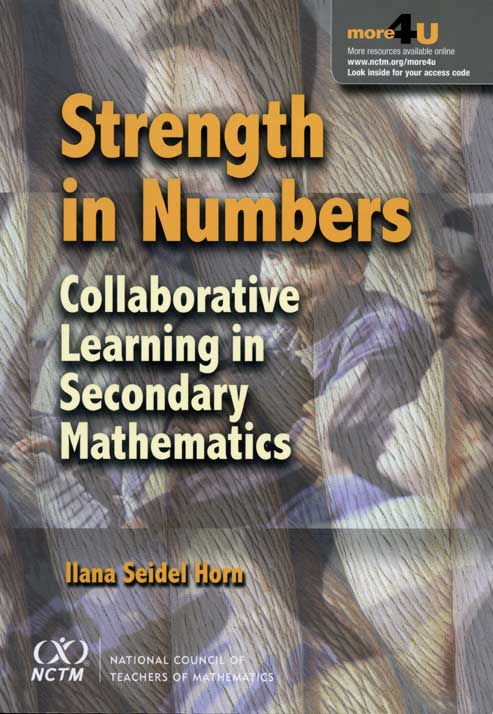by Jane Sevier
When new state standards and high-stakes testing have raised the bar for all students, how can teachers increase the rigor of mathematics instruction while keeping it accessible to a broader range of classroom learners? Collaborative learning is one answer, according to Ilana Horn, associate professor of mathematics education at Vanderbilt Peabody College of education and human development.
 In her new book, Strength in Numbers: Collaborative Learning in Secondary Mathematics (National Council of Teachers of Mathematics, 2012), Horn describes how teachers can develop tools for effective group work in their secondary mathematics classrooms.
In her new book, Strength in Numbers: Collaborative Learning in Secondary Mathematics (National Council of Teachers of Mathematics, 2012), Horn describes how teachers can develop tools for effective group work in their secondary mathematics classrooms.
She proposes that they move away from a notion of teaching as effective presentation of ideas toward a view of it as designing effective learning environments that support student participation and encourage students to think about mathematics rather than listen passively. By making sense of mathematical content, children learn not only how to do mathematics but also why it works.

“Too often, students fail to make critical connections between what they learned and how they live,” she says. “In much traditional instruction, the emphasis on deep conceptual understanding of mathematics needed for flexible thinking is missing. The more varied ways of knowing, representing and talking about math that are accepted, the greater the chances that more students will feel that their prior knowledge is valuable and that they will be able to make meaningful connections that lead to understanding.”
In Strength in Numbers, Horn explores supporting meaningful learning for all students. She argues that students need to use and show their ability to complete a variety of mathematical tasks in group work so that they feel competent and are perceived as such by their classroom peers. She also investigates how teachers can develop group-worthy tasks, help students work together in ways that deepen everyone’s understanding, design group work, and collaborate with colleagues. Horn outlines ideas about mathematical learning that are crucial to collaborative learning:
- To use knowledge flexibly, students need to understand what they are learning.
- New understandings build off prior understandings.
- Mathematical practices such as argumentation and justification support student understanding.
- Students need to be encouraged to see themselves as a source of mathematical knowledge.
- How students learn influences cognition, motivation, affect and sense of self.
The insights offered in Strength in Numbers are intended to help educators understand how students learn mathematics in collaborative settings and assist them in developing tasks, concepts, strategies and tools that create successful group work and reach students of all abilities.
For example, a student who is less skilled in quick-and-accurate calculation may have real strength in making astute connections, working systematically or representing ideas clearly. If students believe their classmates have something to contribute, they have a mathematically motivated reason to listen to and learn from each other.
“Before anything else, teachers must shift how they view their curriculum, moving away from a view of mathematics as a sequence of topics to a web of connected ideas,” Horn says.
With student autonomy as the goal, collaborative learning provides teachers a means to shift from relieving students from their confusion to helping them through it.